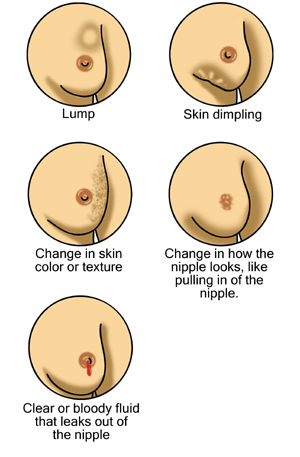[retweet][facebook]
Acupuncture is effective for the treatment of breast cancer drug treatment side effects. The study focuses on acupuncture for the relief of symptoms due to aromatase inhibitor treatment intake. The researchers noted two interesting findings. First, acupuncture is statistically more effective than clonidine for the treatment of hot flashes due to breast cancer treatment. Secondly, statistical differences between sham acupuncture and real acupuncture did not exist in some quality of life measures determined by questionnaires to participants. Oddly, the publication makes no mention of acupuncture needle techniques, types, brands, lengths, gauges, insertion angles and insertion depths.
 Real acupuncture produced a mean reduction of 37% for hot flashes. The researchers note that this is superior to the 20% reduction achieved by the pharmaceutical drug clonidine but less than that achieved by paroxetine (45.6%). The researchers note that acupuncture, unlike the medications reviewed, “was not associated with any significant side effects, whereas clonidine and antidepressants were associated with multiple side effects….”
Real acupuncture produced a mean reduction of 37% for hot flashes. The researchers note that this is superior to the 20% reduction achieved by the pharmaceutical drug clonidine but less than that achieved by paroxetine (45.6%). The researchers note that acupuncture, unlike the medications reviewed, “was not associated with any significant side effects, whereas clonidine and antidepressants were associated with multiple side effects….”
The mean percentage of hot flashes in the sham acupuncture group worsened by 79% whereas the real acupuncture group demonstrated a mean improvement by 37%. However, the researchers do not cite statistical differences between real acupuncture and sham acupuncture. This is because the sham acupuncture scores were worsened, in part, due to 3 sham acupuncture patients whose symptoms worsened significantly. This depressed the sham acupuncture score significantly. Also, assessments for mood, anxiety and other measures showed similarities. As a result, the researchers concluded that both real acupuncture and sham acupuncture demonstrated statistically similar improvements.
Real acupuncture patients did not have severe increases in hot flashes. Sham acupuncture patients did have severe increases. Overall improvements for both groups were significant for specific ailments and without side effects. The researchers note that one major difficulty with this study is that the sample size of participants was small and further investigation is warranted.
A closer look at the data confirms that further investigation is warranted. When sorting for hot flashes in a mean severity score and a mean frequency score, real acupuncture demonstrated marked improvement over sham acupuncture for African-Americans and women under 50 years of age. However, no statistical differences were noted based on body mass index (BMI). Additionally, the researchers note no statistical differences for quality of life scores between real and sham acupuncture although both arms of the study showed significant improvement.
The study randomized patients into real acupuncture and sham acupuncture groups that were observed for 8 weeks. The real acupuncture group received acupuncture at acupoints CV4, CV6, CV12, LI4, P6, GB34, ST36, KI3 and UB65. The sham acupuncture group “received nonpenetrating, retractable needles placed in 14 sham acupoints located at the midpoint of the line connecting 2 real acupoints.”
There is no mention of obtaining deqi, needle type or brand, depth of needle insertion or angle of insertion in the full text of the research paper. This is an unusual omission and one uncommon to many important acupuncture research publications. Absent this data in the official release, further investigation is needed to determine if the real acupuncture group was actually an additional sham group because of acupuncture needling protocol variance.
If the needles were tapped through an auto-insertion tube to an insufficient depth or were applied with an insufficient needle gauge, the real acupuncture group’s clinical efficacy would have been greatly impaired and therefore becomes non-reflective of actual clinical practice by a licensed acupuncturist. As such, the real acupuncture group simulates a theoretical approach to acupuncture inconsistent with Traditional Chinese Medicine (TCM) protocol and has the clinical efficaciousness of a sham acupuncture group. Regardless of the actual techniques employed, the published research lacks transparency and contains conspicuous procedural omissions.
A major concern with this type of study is the acupuncture point prescription chosen for all participants. A standard acupuncture point formulation is applied regardless of individual indications and differential diagnoses in this study. This is not unusual for research but is a weakness of this format. In Traditional Chinese Medicine, this particular set of standard points is not applied in all cases of breast cancer treatment side effects. As a result, the study does not measure the effects of acupuncture as it is administered in a clinical setting. The study measures only the benefits of acupuncture at this set of acupoints using unspecified acupuncture needles and needle techniques.
The research publication lists 7 MDs, 2 CCRPs, 2 BSs, 2 PhDs and 1 licensed acupuncturist as authors. Authors were affiliated with either The University of Maryland Greenbaum Cancer Center, Baltimore, Maryland; or the Johns Hopkins Sidney Kimmel Comprehensive Cancer Center, Baltimore, Maryland. Two MDs had published conflict of interest statements. They received compensation as either consultants or for research funding from the pharmaceutical companies Novartis, GlaxoSmithKline, Pfizer and/or Merk.
In other research conducted by Yale University in conjunction with the University of Pittsburg, researchers concluded that acupuncture significantly reduces hot flashes for women receiving conventional breast cancer treatments including tamoxifen and hormonal agents. In a randomized placebo controlled clinical trial, the researchers measured a 30% reduction of hot flashes for women receiving acupuncture. In yet another study of 94 women, researchers discovered that acupuncture is effective for the relief of hot flashes and sleep disturbances for women receiving conventional breast cancer treatment. The real acupuncture group showed improvements and the sham acupuncture group did not show improvements.
Excerpt from:
